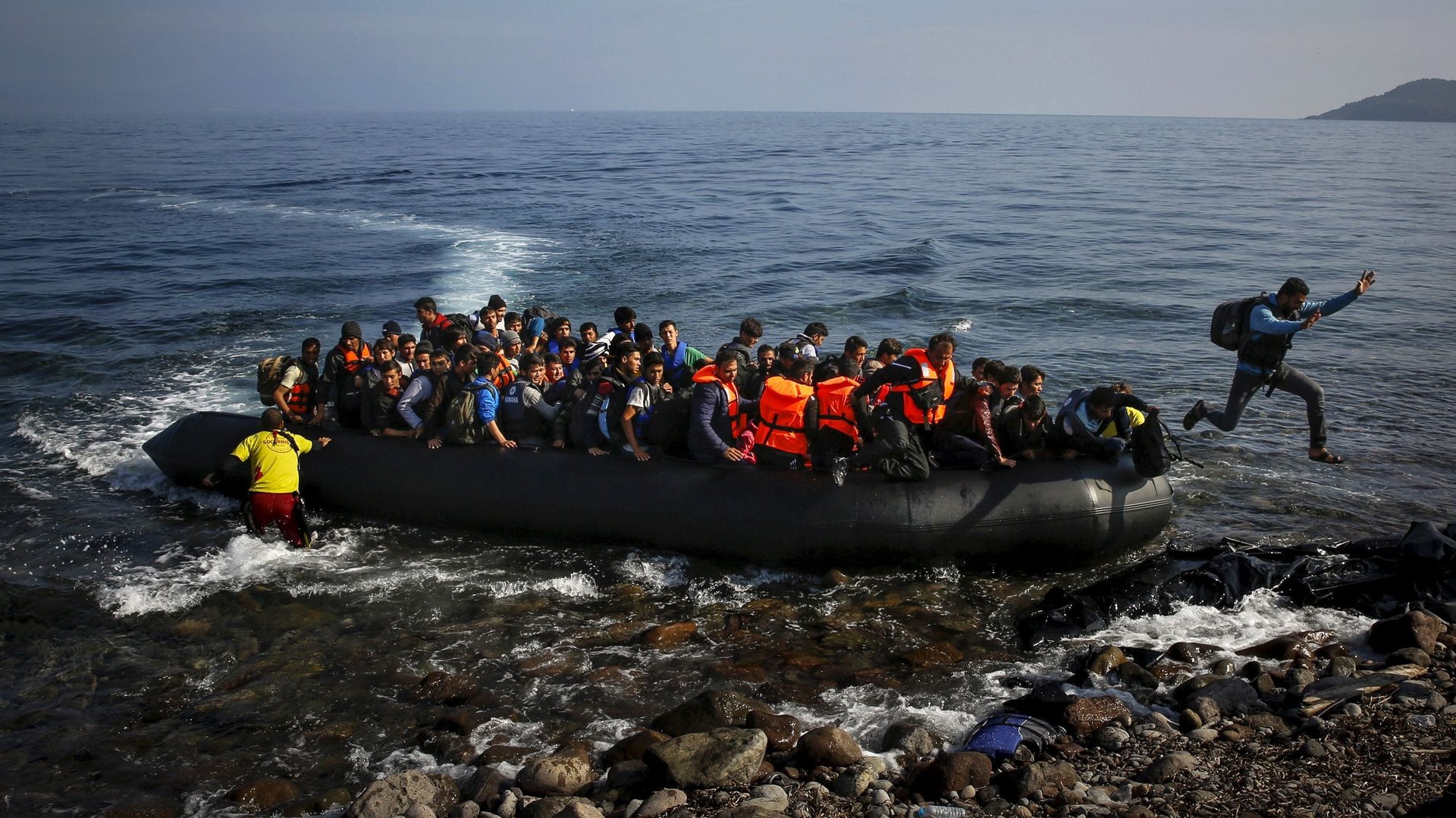The death rate for migrants crossing the Mediterranean is skyrocketing
The journey to Europe is becoming ever more perilous.


The journey to Europe is becoming ever more perilous.
While migrant arrivals by sea have reduced dramatically over the last two years, the proportion of deaths per attempted crossing has spiked. An analysis of recent data by UNHCR and the Missing Migrants Project shows that over the last six months, 28 of every 1,000 migrants died undertaking the boat journey over the Mediterranean. The figure is not far off the all-time high set in early 2017.
At the same time, the number of migrants who crossed the Mediterranean in June dropped by 94% compared to the peak of migrant crisis in 2015.
Migrants often undertake three main routes across the Mediterranean: the Western Mediterranean route (which includes the sea and land border between Spain and Morocco), the Eastern Mediterranean route (the sea and land border between Turkey, Greece and Bulgaria), and the Central Mediterranean route (the sea crossing from Tunisia, Libya, or Egypt towards Italy or Spain).
Initially, the Western Mediterranean route was most traveled with migrants as they could walk across the only land border between Europe and Africa, where Spain and Morocco meet. Over a decade ago, Spain responded to the tens of thousands of migrants using this crossing by building more fences, and reinforcing the ones it already had to deter migrants. Migrant flows were then redirected to the Eastern Mediterranean route, where migrants first crossed into Europe through the land border between Greece and Turkey. Once Greece built a fence, many began crossing through the land border between Turkey and Bulgaria until more fences were built there. Eventually, migrants undertook the dangerous sea journey across the Aegean Sea in their bid to reach Greece. But that route was effectively closed off once the European Union (EU) signed a deal with Turkey in 2016, which saw Turkey receive billions in aid in return for agreeing to take back migrants who cross over to Greece.
One of the few routes left for migrants was the Central Mediterranean route. With the devastating civil war in Libya, and restrictive fences and border patrols at other routes, more migrants who opted for the Central Mediterranean route believed they were less likely to be returned if detected by authorities. But this route, in which migrants can be stranded at sea for weeks, remains the most dangerous.
As such, death rates remain stubbornly high overall. Just last week, more than 200 migrants drowned at sea in the Mediterranean.
But even the Central Mediterranean route is slowly being cordoned off. In November 2017, the EU signed a controversial deal with Libyan authorities to intercept migrants and return them to detention centers. The Italian government, with the backing of the EU, has also severely restricted NGO rescue boasts in the area. The UN described the deal as “inhuman,” while campaigners have accused the Libyan coast guard of abandoning migrants at sea.